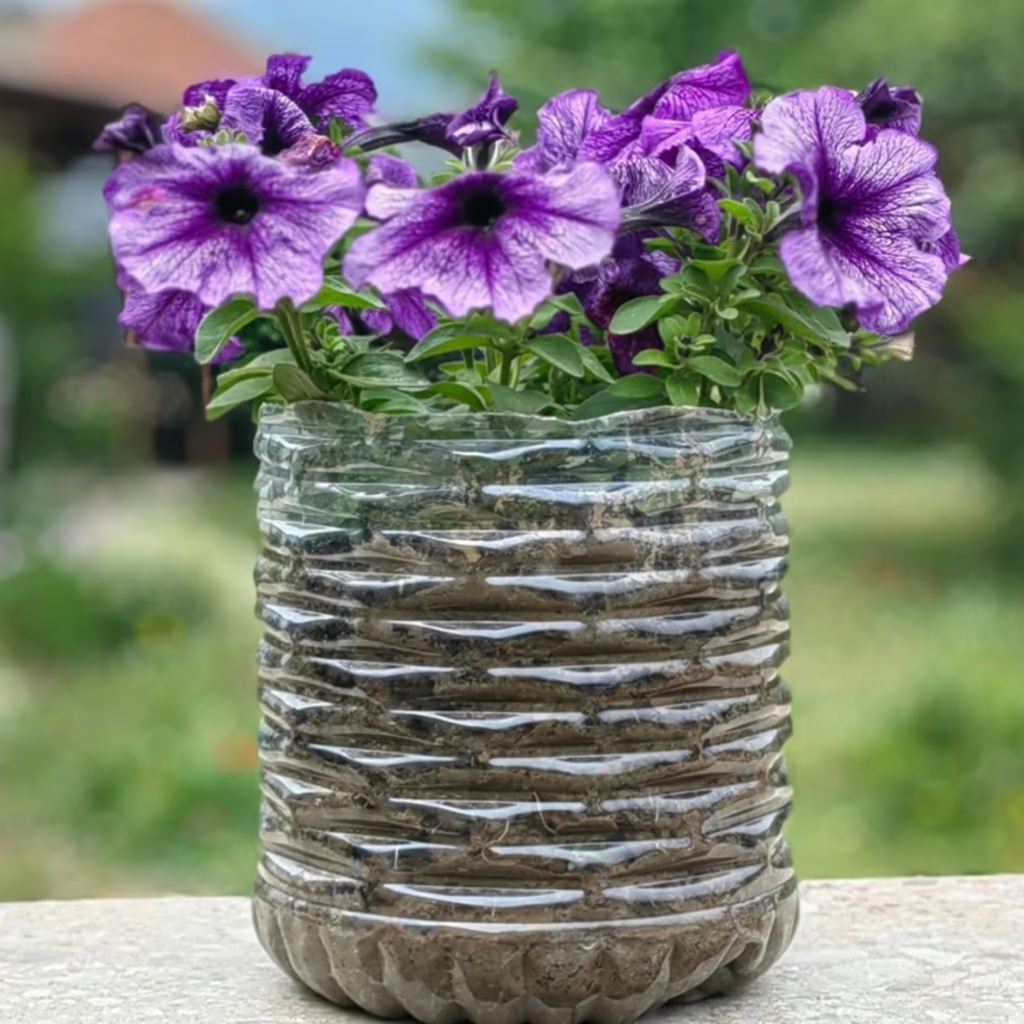Morning glories are fast-growing, climbing flowering plants that can transform balconies, fences, trellises, and walls into lush, vibrant green screens. Their heart-shaped leaves and trumpet-shaped flowers not only provide aesthetic appeal but also serve as natural privacy barriers for urban gardens, patios, and balconies. With proper planning, soil preparation, and maintenance, morning glories can become a beautiful and functional addition to your outdoor space.
This guide provides detailed insights into choosing varieties, preparing soil, planting, training, watering, fertilization, pruning, pest management, and tips for achieving dense coverage for natural privacy.
Why Morning Glories Are Ideal for Privacy

Morning glories are well-suited for privacy purposes due to several traits:
- Rapid Growth: They grow quickly, often climbing several feet in a single season.
- Dense Foliage: Heart-shaped leaves create a lush screen that obscures unsightly views.
- Vibrant Flowers: Their trumpet-shaped blooms in blue, purple, pink, white, or red add color to functional privacy.
- Climbing Ability: They naturally twine around trellises, fences, railings, and walls.
- Low Maintenance: Hardy annuals that are easy to grow from seeds.
With the right care, morning glories combine functionality with ornamental beauty, making them a top choice for natural privacy solutions.
Step 1: Choosing the Right Morning Glory Variety

Selecting the right variety ensures both coverage and aesthetic appeal:
- Heavenly Blue (Ipomoea tricolor): Classic blue flowers with a vigorous growth habit, ideal for full-screen privacy.
- Scarlet O’Hara: Bright red flowers that create an eye-catching privacy wall.
- Grandpa Ott: Tall vines with deep purple blooms, perfect for large trellises.
- White Wonder: White flowers for a subtle, elegant screen.
- Mixed Colors: Planting multiple colors creates a vibrant, decorative privacy screen.
Consider growth height, bloom color, and climate suitability when selecting varieties for your space.
Step 2: Preparing the Soil

Morning glories thrive in well-draining, moderately fertile soil:
- Soil Type: Loamy or sandy soil ensures proper drainage and root development.
- Soil pH: Slightly acidic to neutral (pH 6.0–7.0) is ideal.
- Nutrient Preparation: Mix compost or well-rotted manure to enrich soil without overfertilizing. Excess nitrogen may produce more foliage at the expense of flowers.
- Seed Preparation: Scarify seeds by nicking the outer coat or soaking them overnight to improve germination rates.
Healthy soil ensures strong roots, fast growth, and abundant blooms.
Step 3: Planting Morning Glory Seeds
Planting correctly is crucial for successful germination:
- Timing: Sow seeds after the last frost when soil is warm (65–75°F / 18–24°C).
- Spacing: Space seeds 6–12 inches apart to allow room for climbing.
- Depth: Plant seeds about ½ inch deep in prepared soil.
- Germination: Seeds usually sprout within 7–14 days. Keep soil consistently moist during this period.
- Containers vs. Ground: Morning glories grow well in large containers, balcony planters, or directly in garden soil.
Proper planting ensures healthy seedlings ready for climbing and foliage coverage.
Step 4: Providing Support for Climbing

Morning glories need structures to climb for maximum privacy:
- Trellises: Wooden, metal, or bamboo trellises support upward growth.
- Fences: Chain-link or wooden fences allow vines to naturally twine.
- String or Wire Lines: Stretch lines horizontally or vertically for balcony railing coverage.
- Pergolas or Arches: Ideal for decorative privacy screens in outdoor seating areas.
Secure support structures guide growth and create dense foliage walls for effective screening.
Step 5: Watering and Moisture Management
Consistent watering is essential, especially during early growth:
- Frequency: Water regularly, keeping soil moist but not waterlogged.
- Container Plants: Ensure drainage holes prevent root rot.
- Mulching: Apply organic mulch around the base to retain moisture and moderate soil temperature.
- Monitoring: Reduce watering during heavy rains but maintain consistent moisture for container plants.
Proper moisture promotes healthy growth, larger leaves, and more abundant flowers.
Step 6: Fertilization for Optimal Growth
Morning glories are not heavy feeders but benefit from occasional nutrients:
- Balanced Fertilizer: Use a low-nitrogen, high-phosphorus fertilizer to encourage flowering over foliage.
- Frequency: Fertilize every 4–6 weeks during active growth.
- Organic Alternatives: Compost tea or diluted fish emulsion promotes vigorous growth naturally.
- Avoid Excess Fertilizer: Too much nitrogen leads to excessive leaves with fewer flowers.
Balanced nutrition ensures dense foliage and continuous blooms for an effective privacy screen.
Step 7: Pruning and Training

Proper pruning and training enhance coverage and appearance:
- Train Young Vines: Gently tie or guide vines to the support structure.
- Prune Excess Growth: Remove weak or overly long shoots to encourage bushier growth.
- Deadheading: Remove faded flowers to encourage new blooms and maintain aesthetic appeal.
- Seasonal Maintenance: Trim after flowering season to prepare for next growth cycle.
Pruning and training promote dense coverage, improve airflow, and enhance flower production.
Step 8: Pest and Disease Management
Morning glories are relatively hardy but susceptible to certain pests:
- Common Pests: Aphids, spider mites, and caterpillars.
- Preventive Measures: Inspect leaves regularly and remove infested foliage.
- Organic Remedies: Use neem oil, insecticidal soap, or introduce beneficial insects.
- Diseases: Fungal infections can occur in humid climates; ensure proper spacing and airflow.
Early detection and management protect plants from stress and maintain healthy foliage for privacy.
Step 9: Achieving Maximum Privacy Coverage
For a dense natural screen:
- Plant in Rows: Use multiple plants along fences or balcony edges for uninterrupted coverage.
- Layer Growth: Train vines to grow both vertically and horizontally for thicker foliage.
- Staggered Planting: Plant in stages for continuous coverage and bloom periods.
- Maintenance: Regular pruning and training ensure vines fill gaps and remain healthy.
Dense foliage creates an effective privacy barrier, blocking unwanted views while providing greenery.
Step 10: Additional Tips for Morning Glory Success
- Sunlight Needs: Morning glories perform best in full to partial sun; at least 4–6 hours of sunlight per day ensures vibrant blooms.
- Wind Protection: Use windbreaks on balconies or exposed areas to prevent vine damage.
- Companion Plants: Plant smaller flowers at the base to add color and texture beneath the climbing vines.
- Container Selection: Use deep containers to accommodate the extensive root system of climbing vines.
- Seed Collection: Allow some flowers to set seed at the end of the season for easy propagation next year.
Following these tips ensures long-lasting privacy, abundant blooms, and vigorous plant health.
Benefits of Morning Glories as Natural Privacy Plants
- Fast Growth: Provide a green screen in a single growing season.
- Aesthetic Appeal: Vibrant flowers and lush leaves enhance balcony or garden beauty.
- Functional Privacy: Effective natural barrier against neighbors or unsightly views.
- Pollinator-Friendly: Attracts bees, butterflies, and hummingbirds.
- Low Maintenance: Hardy annuals requiring minimal care.
Morning glories combine functionality, beauty, and ecological benefits, making them ideal for urban and balcony gardens.
Conclusion
Growing morning glories for natural privacy is a practical and beautiful solution for urban gardens, balconies, fences, and pergolas. By selecting the right variety, preparing fertile soil, providing support structures, and following proper watering, fertilization, and pruning practices, gardeners can create dense, vibrant, and functional screens.
Morning glories’ rapid growth, lush foliage, and vibrant blooms provide both aesthetic appeal and effective privacy. With attentive care, pest management, and strategic planting, balcony or garden spaces can be transformed into green, tranquil sanctuaries that combine beauty, privacy, and ecological benefits.
Whether planted in containers, directly in the ground, or along trellises, morning glories offer an accessible and rewarding solution for gardeners seeking natural privacy while adding a touch of floral elegance to outdoor spaces.
